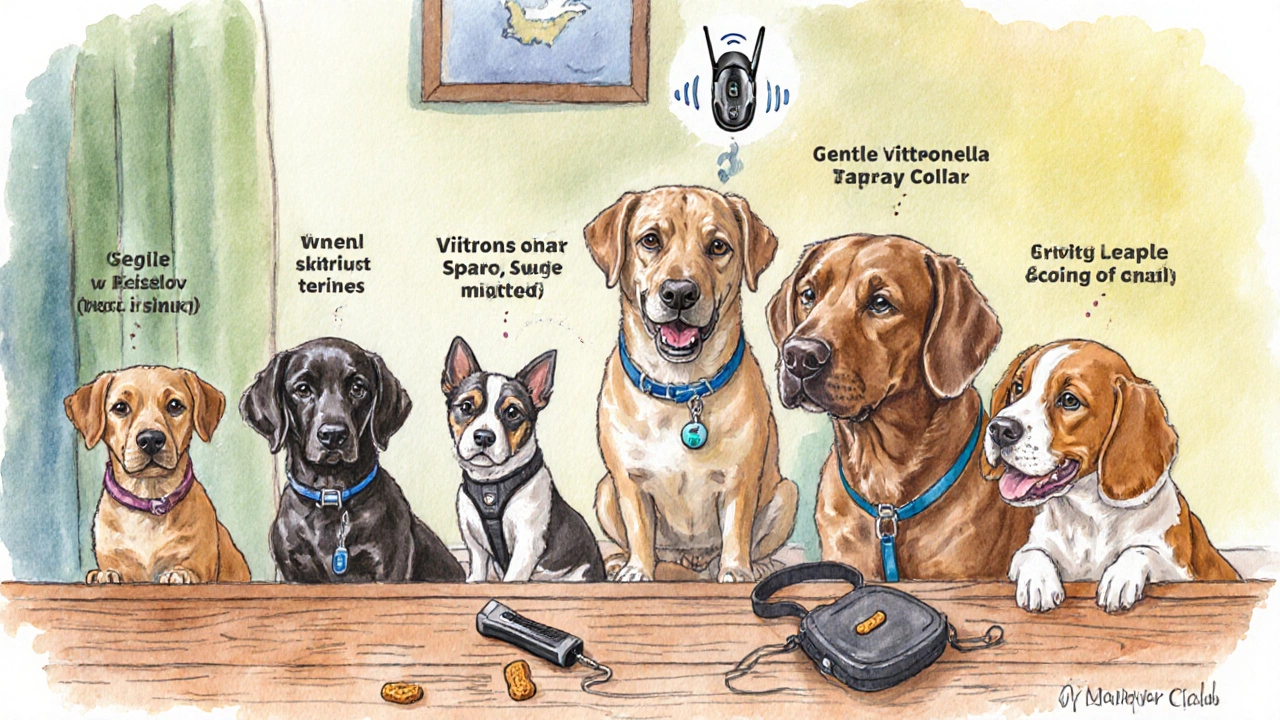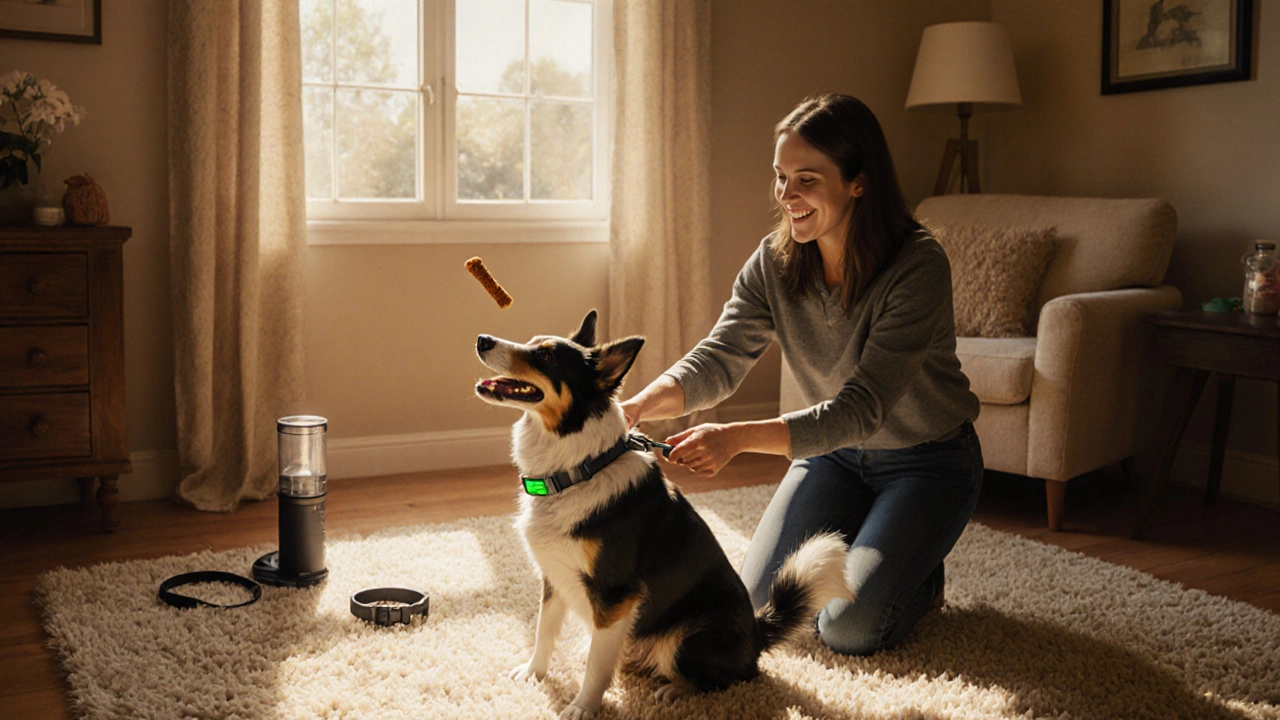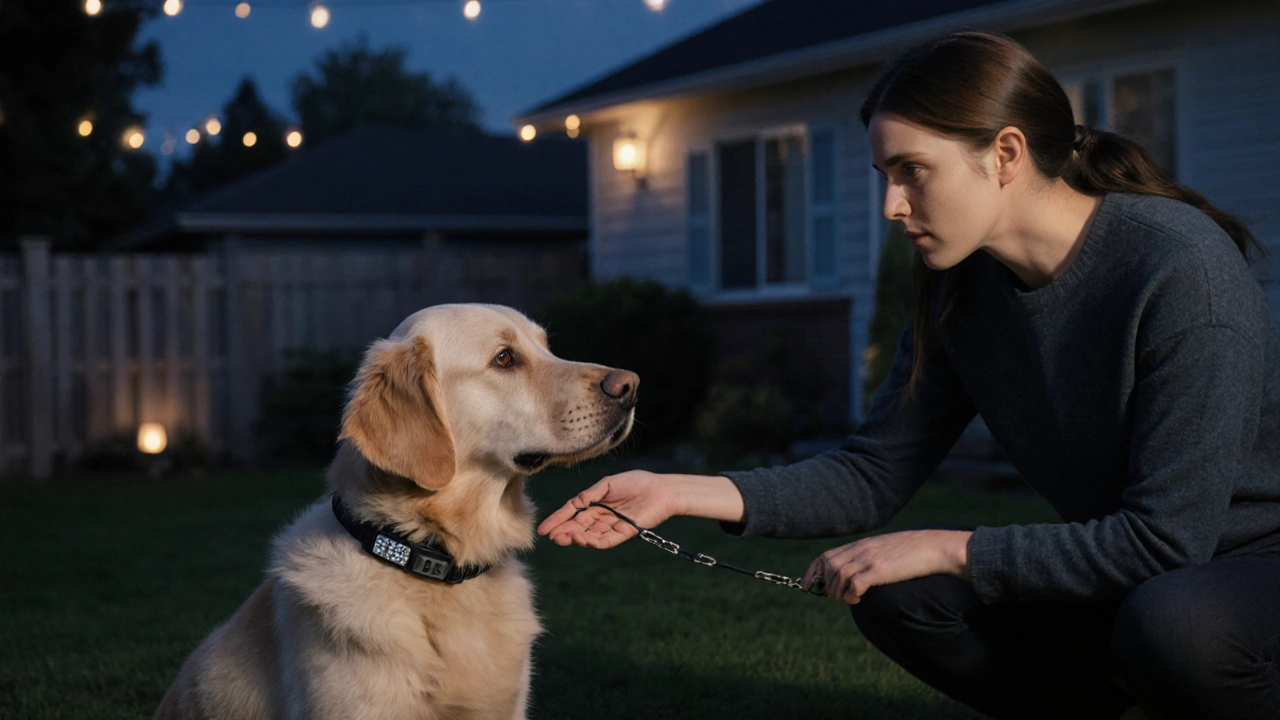Humane Training Tool Selector
Ever felt a knot in your stomach thinking about the buzz of a shock collar on your dog’s neck? You’re not alone. Many owners worry that the electric bite feels more like punishment than guidance. The good news is there are several humane ways to teach good behavior without a painful jolt. Below you’ll find clear options, what makes them kind, and a roadmap to switch safely.
Key Takeaways
- Humane tools rely on non‑painful cues such as vibration, scent, or sound.
- Positive reinforcement paired with a cue yields faster, lasting results.
- Each alternative fits different training goals, budgets, and dog temperaments.
- Transitioning requires a gradual phasing‑out plan and consistent rewards.
- Avoid common mistakes like over‑using cues or ignoring the dog’s stress signals.
When looking for a humane alternative to a shock collar, it helps to first understand why the electric device is problematic.
Shock collar is a remote‑controlled device that delivers a brief electric pulse to a dog’s neck when it triggers a preset behavior, such as barking or running off‑lead. It was originally marketed for pest control, but many trainers now view it as a last‑resort correction tool because the pain can cause anxiety, fear, and even aggression.
What Makes a Training Tool Humane?
Humane tools share three core attributes:
- Non‑painful stimulus: The cue should never hurt the dog’s skin or nerves.
- Clear communication: The dog must instantly understand what behavior is being praised or discouraged.
- Positive reinforcement: Rewards (treats, play, or affection) follow the cue, reinforcing the desired action.
When these criteria are met, the dog learns out of curiosity and desire rather than fear.

Top Humane Alternatives
Below are the most popular devices that meet the humane checklist.
1. Vibration collar
A battery‑powered collar that emits a gentle buzz when the remote button is pressed. The vibration can be adjusted from light to firm, allowing you to match the dog’s sensitivity. Researchers at the University of Queensland (2023) found that dogs responded to vibration cues as quickly as to audible tones when paired with treats.
2. Citronella spray collar
This collar releases a quick burst of citronella scent near the dog’s nose when activated. The smell is unpleasant but not painful, interrupting unwanted barking or lunging. A 2022 field study with 150 households reported a 78% reduction in excessive barking after two weeks of consistent use.
3. Ultrasonic collar
The device emits a high‑frequency sound that only dogs can hear. The tone serves as a distraction cue, stopping the behavior without any physical sensation. It works best for dogs that are not startled by sudden noises and is popular among owners of small breeds.
4. Head halter
A leash‑attached device that gently redirects the dog’s head when it pulls or lunges. By steering the head, the body follows, giving the owner control without any shock.
5. Gentle leader harness
A soft, figure‑eight harness that fits around the neck and behind the ears, providing subtle pressure when the leash is pulled. It’s especially good for reactive dogs because the pressure is evenly distributed and feels more like a gentle reminder.
6. Clicker + Treat dispenser
A clicker makes a consistent ‘click’ sound that marks the exact moment a desired behavior occurs. Pair it with a treat‑dispensing collar or hand‑held treat pouch to reward instantly. This classic positive‑reinforcement combo is backed by decades of scientific research on operant conditioning.
Comparison of Humane Alternatives
| Device | Stimulus Type | Effectiveness (Avg.) | Best For | Pros | Cons |
|---|---|---|---|---|---|
| Vibration collar | Tactile (buzz) | 85% | Medium‑size dogs, indoor training | Adjustable intensity, silent to humans | May be ignored by very high‑energy dogs |
| Citronella collar | Scent spray | 78% | Barking control, outdoor use | Non‑painful, works instantly | Odor can linger, not ideal for scent‑sensitive dogs |
| Ultrasonic collar | Sound (high‑freq) | 72% | Small breeds, noise‑tolerant dogs | No physical contact, lightweight | Ineffective if dog is deaf or startled by noises |
| Head halter | Physical redirection | 90% | Pulling, reactive dogs | Immediate control, teaches loose‑lead walking | Requires proper fitting, can feel odd at first |
| Gentle leader | Soft pressure | 88% | Small to medium dogs, nervous dogs | Even pressure, easy to put on | Not suitable for very strong pullers |
| Clicker + Treat dispenser | Audible cue + food reward | 95% | All ages, learning new tricks | Scientifically proven, builds trust | Requires regular treat supply, may be less useful for off‑lead recall |

How to Transition From a Shock Collar to a Humane Tool
Switching doesn’t happen overnight. Follow these steps to keep your dog comfortable and maintain progress.
- Assess the current behavior: Note when and why the shock collar was activated. Write down triggers (e.g., barking at the front door).
- Choose the right humane device: Match the trigger to a cue type. For bark‑control, a citronella collar works well; for pulling, a head halter is ideal.
- Introduce the device without activation: Let the dog wear it for a few minutes each day while you give treats. This builds neutral association.
- Pair the cue with a reward: When the dog starts the undesired behavior, use the humane cue (vibration, click, etc.) and immediately follow with a high‑value treat.
- Gradually phase out the shock setting: If the old collar has multiple levels, lower the intensity to the lowest possible before removing it completely.
- Monitor stress signals: Watch ears, tail, and breathing. If the dog shows signs of anxiety, back up a step and add more rewards.
- Consistency is key: Everyone in the household must use the same cue and reward system for at least two weeks.
Common Pitfalls and How to Avoid Them
Even the best tools can backfire if used incorrectly.
- Over‑reliance on the cue: Using a vibration or citronella burst every time a dog hesitates can create a negative association. Keep cues brief and always reward.
- Skipping the reward: A cue without a treat feels like a correction, not reinforcement. Pair 100% of cues with a reward during the learning phase.
- Choosing the wrong device for the dog’s temperament: High‑energy retrievers may ignore a soft vibration, while a shy terrier could be frightened by an ultrasonic blast.
- Inconsistent timing: The reward must come within two seconds of the cue. Delayed treats confuse the dog about what behavior was marked.
Frequently Asked Questions
Are vibration collars truly painless?
Yes. The vibration is a mild buzz similar to a phone notification. Most dogs tolerate it well, especially when paired with positive rewards. It never causes skin irritation if the collar fits properly.
Can I use a citronella collar for a dog with a sensitive nose?
If your dog is highly scent‑sensitive, start with a low‑volume spray and observe reactions. Some owners find a diluted citronella or a scent‑free vibration collar works better.
Do ultrasonic collars work on deaf dogs?
No. Deaf dogs can’t hear the high‑frequency tone, so the cue is ineffective. Choose a tactile or scent‑based alternative instead.
How long should I expect the transition period to last?
Most dogs adapt within two to four weeks if you train consistently and reward every correct response. Highly entrenched behaviors may need up to eight weeks.
Is a clicker‑only approach enough for off‑lead recall?
Clickers are excellent for shaping recall when combined with high‑value treats or a favorite game. The click marks the exact moment the dog looks at you, reinforcing the call.
Choosing a humane alternative isn’t just about avoiding pain; it’s about building a relationship based on trust and clear communication. Whether you pick a vibration collar, a clicker system, or a gentle leader, the key is consistency, timing, and plenty of treats. Your dog will thank you with wagging tails, not whining ears.
